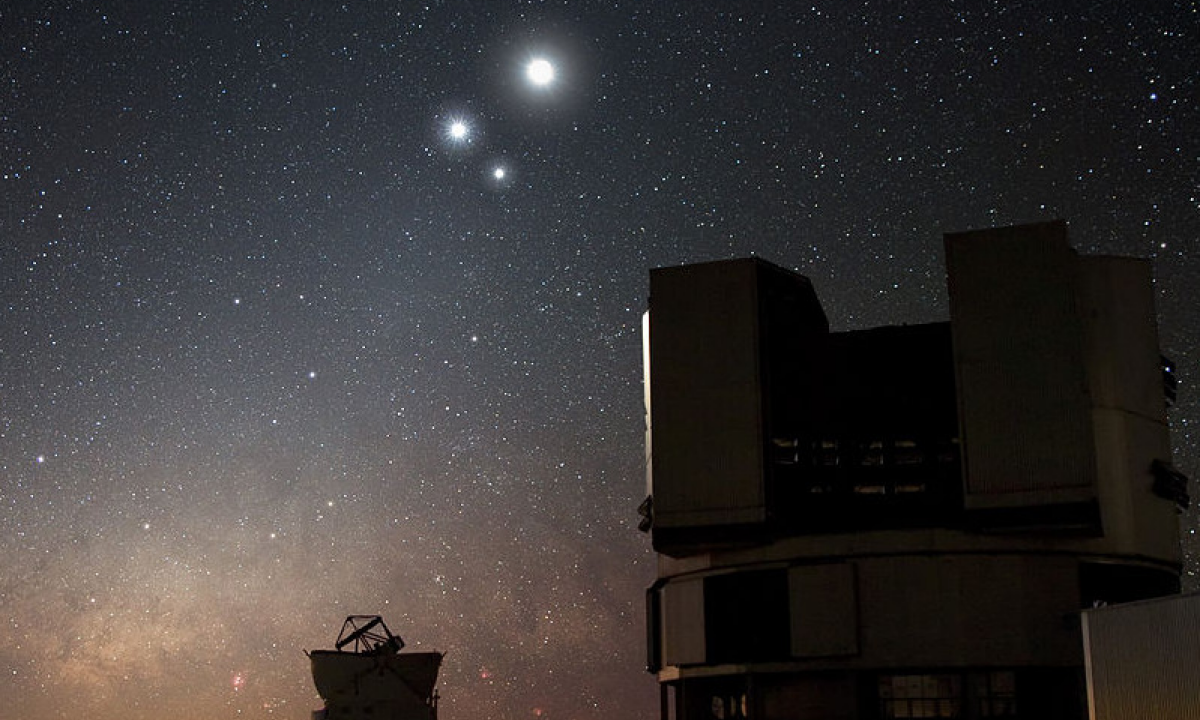The Moon will reach the
furthest point along its orbit to the Earth and will appear slightly smaller
than at other times.
The Moon’s distance from the Earth varies because its orbit is not perfectly
circular – it is slightly oval-shaped, tracing out a path called
an ellipse.
As the Moon traverses this elliptical path around the Earth each month, its
distance varies by
14%, between
356,500 km at perigee (closest approach to the Earth) and
406,700 km at apogee (furthest from the Earth).
Its angular size also varies by the same small factor, between
29.4 arcmin and
33.5 arcmin
and its brightness also
changes, though this is hard to detect in practice since the Moon’s phases are
changing at the same time.
The chart below shows this variation in the Moon’s angular size to scale. The change is small enough that it is
virtually impossible to perceive except by comparing photographs:
The exact period of the Moon’s cycle between perigee (closest approach), apogee
(furthest recess) and back again is 27.555 days – a period of time
called an anomalistic month. This is very close to the Moon’s orbital
period (27.322 days), but slightly longer. For more information on why these
periods don’t exactly match, see In-The-Sky.org’s glossary article for the term
month.
As the apogee of 9 October 2023 will occur close to the time of new moon, the moon will appear as no more than a thin crescent.
The Moon illusion
Although the angular size of the Moon only changes by a very modest amount in reality, a very common optical
illusion is that the Moon appears very much larger than it really is when it is close to the horizon.
This is called the Moon illusion – and is nothing more than an optical illusion. Any photograph
will reveal that the Moon is exactly the same size regardless of whether it appears on the horizon or directly
overhead.
The reason why we perceive this optical illusion is hotly debated. However, it may explain why some people are
convinced that the Moon appears larger on some nights than others, despite the actual changes in its
true size being so small.
Celestial coordinates
On this occasion the Moon will recede to a distance of
405,000 km from the Earth and appear with an angular diameter of
29.46 arcmin.
The position of the Moon at the moment of apogee will be:
| Object | Right Ascension | Declination | Constellation | Angular Size |
| The Moon | 09h57m30s | 17°15’N | Leo | 29’27” |
The coordinates above are given in J2000.0.
The sky on 9 Oct 2023
Source
The circumstances of this event were computed using the DE430 planetary ephemeris published by the Jet Propulsion Laboratory (JPL).
This event was automatically generated by searching the ephemeris for planetary alignments which are of interest to amateur astronomers, and the text above was generated based on an estimate of your location.
Related news
Image credit
Simulated image courtesy of Tom Ruen.




